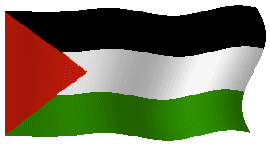| Topic: Free Palestine | |
|---|---|
|
General Facts & Figures
The Palestinian “Nakba” (“catastrophe” in Arabic) refers to the mass expulsion of Palestinian Arabs from British Mandate Palestine during Israel’s creation (1947-49). The Nakba was not an unintended result of war. It was a deliberate and systematic act necessary for the creation of a Jewish majority state in historic Palestine, which was overwhelmingly Arab prior to 1948. Internally, Zionist Jewish leaders used the euphemism “transfer” when discussing plans for what today would be called ethnic cleansing. The Nakba’s roots lay in the emergence of political Zionism in 19th century Europe, when some Jews, influenced by the nationalism then sweeping the continent, concluded that the remedy to centuries of anti-Semitic persecution in Europe and Russia was the creation of a nation state for Jews in Palestine and began emigrating as colonists to the Holy Land, displacing indigenous Palestinians in the process. In November 1947, following the horrors of World War II and the Nazi genocide of European Jewry, the newly-created United Nations approved a plan to partition Mandate Palestine into Jewish and Arab states. It allocated approximately 55% of the land to the proposed Jewish state, although Zionist Jews owned only about 7% of the private land in Palestine and made up only about 33% of the population, a large percentage of whom were recent immigrants from Europe. The Palestinian Arab state was to be created on 42% of Mandate Palestine, with Jerusalem becoming an international city. (See here for map of the partition plan and subsequent 1949 armistice lines.) Almost immediately after the partition plan was passed, violence broke out and large-scale expulsions of Palestinians began, long before the armies of neighboring Arab states became involved. When Zionist forces finished expanding, the new state of Israel comprised 78% of historic Palestine, with the remainder, the West Bank, including East Jerusalem, and Gaza, falling under the control of Jordan and Egypt, respectively. In the 1967 War, Israel occupied the remaining 22% and began colonizing them shortly thereafter. The Nakba did not end in 1948 and continues until today, in the form of Israel’s ongoing theft of Palestinian land for settlements and for Jewish communities inside Israel, its destruction of Palestinian homes and agricultural land, revocation of residency rights , deportations, periodic brutal military assaults that result in mass civilian casualties such as the one that took place in Gaza in the summer of 2014, and the denial of the internationally-recognized legal right of return of millions of stateless Palestinian refugees. The Nakba by the Numbers Between 750,000 and one million : The number of Palestinians expelled and made refugees by Zionist paramilitaries, and subsequently Israeli forces, during Israel’s creation in 1947-49. Between 250,000 and 350,000 : The number of Palestinians expelled from their homes by Zionist paramilitaries between the passage of the UN partition plan in November 1947 and Israel’s declaration of independence on May15, 1948 - prior to the start of the war with neighboring Arab states. Approximately 7.1 million : The number of Palestinian refugees and displaced persons as of 2009, including Nakba survivors and their descendants. They are located mostly in the occupied West Bank and neighboring Arab countries such as Lebanon, Jordan, and Syria, denied their internationally-recognized legal right to return to their homeland by Israel, simply because they are not Jewish. Approximately 150,000 : The number of Palestinians who remained inside what became Israel's borders in 1948, many of them internally displaced. These Palestinians (sometimes called “Israeli Arabs”) were granted Israeli citizenship but stripped of most of their land and placed under martial law until 1966. As of 2018, there are nearly two million Palestinian citizens of Israel, who live as second-class citizens in their own homeland, subject to dozens of laws that discriminate against them because they are not Jewish. At least two dozen : The number of massacres of Palestinian civilians by Zionist and Israeli forces, which played a crucial role in spurring the mass flight of Palestinians from their homes. Approximately 100 : The number of Palestinian civilians, including women and children, massacred in the town of Deir Yassin on April 9, 1948, by members of the Irgun and Stern Gang, pre-state Zionist terrorist organizations led by future Israeli prime ministers Menachem Begin and Yitzhak Shamir, respectively. More than 400 : The number of Palestinian cities and towns systematically destroyed by Israeli forces or repopulated with Jews between 1948 and 1950. Most Palestinian population centers, including homes, businesses, houses of worship, and vibrant urban centers, were demolished to prevent the return of their Palestinian owners, now refugees outside of Israel's pre-1967 borders, or internally displaced inside of them. (See here for interactive map of Palestinian population centers destroyed during Israel's creation.) Approximately 4,244,776 : The number of acres of Palestinian land expropriated by Israel during and immediately following its creation in 1948. Between 100 and 200 billion : The total estimated monetary loss of Palestinians dispossessed during Israel's creation, in current US dollars. https://imeu.org/article/quick-facts-the-palestinian-nakba |
|
|
|
|
|
Edited by
Sir Dino One Love ☝️💚
on
Fri 05/29/20 04:58 AM
|
|
|
Education, not discrimination is the only key..


|
|
|
|
|
|
The 1948 (or First) Arab–Israeli War was the second and final stage of the 1947–49 Palestine war. It formally began following the end of the British Mandate for Palestine at midnight on 14 May 1948; the Israeli Declaration of Independence had been issued earlier that day, and a military coalition of Arab states entered the territory of British Palestine in the morning of 15 May.
The first deaths of the 1947–49 Palestine war occurred on 30 November 1947 during an ambush of two buses carrying Jews. There had been tension and conflict between the Arabs and the Jews, and between each of them and the British forces since the 1917 Balfour Declaration and the 1920 creation of the British Mandate of Palestine. British policies dissatisfied both Arabs and Jews. Arab opposition developed into the 1936–1939 Arab revolt in Palestine, while the Jewish resistance developed into the Jewish insurgency in Palestine (1944–1947). In 1947, these on-going tensions erupted into civil war following the 29 November 1947 adoption of the United Nations Partition Plan for Palestine, which planned to divide Palestine into an Arab state, a Jewish state, and the Special International Regime encompassing the cities of Jerusalem and Bethlehem. On 15 May 1948, the civil war transformed into a conflict between Israel and the Arab states following the Israeli Declaration of Independence the previous day. Egypt, Transjordan, Syria, and expeditionary forces from Iraq entered Palestine. The invading forces took control of the Arab areas and immediately attacked Israeli forces and several Jewish settlements. The 10 months of fighting took place mostly on the territory of the British Mandate and in the Sinai Peninsula and southern Lebanon, interrupted by several truce periods. As a result of the war, the State of Israel controlled the area that UN General Assembly Resolution 181 had recommended for the proposed Jewish state, as well as almost 60-percent of the area of Arab state proposed by the 1947 Partition Plan, including the Jaffa, Lydda, and Ramle area, Galilee, some parts of the Negev, a wide strip along the Tel Aviv–Jerusalem road, West Jerusalem, and some territories in the West Bank. Transjordan took control of the remainder of the former British mandate, which it annexed, and the Egyptian military took control of the Gaza Strip. At the Jericho Conference on 1 December 1948, 2,000 Palestinian delegates called for unification of Palestine and Transjordan as a step toward full Arab unity. The conflict triggered significant demographic change throughout the Middle East. Around 700,000 Palestinian Arabs fled or were expelled from their homes in the area that became Israel, and they became Palestinian refugees in what they refer to as Al-Nakba ("the catastrophe"). In the three years following the war, about 700,000 Jews emigrated to Israel. Around 260,000 Jews came to Israel from the Arab world during and immediately after the war. |
|
|
|
|
|
Edited by
Zion
on
Fri 05/29/20 05:14 AM
|
|
|
The PLO was responsible for scores of acts of terrorism from its creation, resulting in the deaths of thousands of civilians. Among the infamous attacks conducted by the PLO are: the murder of 11 Israeli athletes at the 1972 Munich Olympic Games; the killing of 21 schoolchildren at Ma’alot in 1974; the death of 35 people and wounding of 85 in an attack on Israeli tourist buses along the Haifa-Tel Aviv coastal highway in 1978; the hijacking of the Achille Lauro cruise ship in 1985 and the murder of disabled American Jewish passenger Leon Klinghoffer. The PLO also launched terrorist and guerrilla attacks against Israel from Jordan — until they were ousted by King Hussein in September 1972 — and from Lebanon — until they were ousted by Israel in 1982.
|
|
|
|
|

|
|
|
|
|
|
Widespread Palestinian violence erupted on Friday, September 29, 2000 in the Old City of Jerusalem and in the West Bank and Gaza Strip. The grassroots protests and violence soon turned to a campaign of deadly terrorism targeting Israeli civilians on buses, restaurants and on city streets. Over 1,000 Israelis were killed, and thousands severely injured in these attacks.
Palestinians claimed the outbreak of violence was provoked by the visit of then-Likud Party Chairman Ariel Sharon to the Temple Mount the previous day. Israeli leaders maintain that the violence was orchestrated by the Palestinian leadership, and point to other incidents of violence against Israeli targets in the Gaza Strip days before the Sharon visit. Well before the Sharon visit there were incendiary calls for action in the Palestinian media and in sermons by religious leaders. Furthermore, on September 29, the PA closed the schools under its jurisdiction and coordinated the busing of demonstrators to the Temple Mount. Palestinian leaders have been quoted boasting that the violence was planned as early as July 2000. The outbreak of Palestinian violence and terrorism was particularly disheartening for Israelis, especially those who were supportive of negotiations with the Palestinians, because it erupted just as the most serious negotiations for a final status agreement between Israel and the Palestinians were being pursued. At the Camp David Summit convened by U.S. President Bill Clinton in July 2000, Israeli Prime Minister Ehud Barak had offered the Palestinians far greater concessions on Jerusalem, settlements, and territory than ever anticipated. Yet, the Palestinians refused the Israeli offer and turned to a campaign of violence. In the initial weeks of the Second Intifada, there was a popular element to the violence, with large demonstrations in some Palestinian cities. Intermingled with the civilians at these demonstrations were armed Palestinian gunmen, who often used the cover of the crowd to shoot at Israeli installations. During this period, a Palestinian mob in Ramallah attacked two off-duty Israeli reservists, lynched them, and celebrated their deaths. Within a short time, grassroots participation in the violence ebbed, and the Palestinians turned to directly attacking Israeli civilian centers, military installations, vehicles, and civilians through suicide bombings, drive-by shootings, and rocket launchings, which killed over 1,000 Israelis, and left thousands severely injured. The Palestinian Authority was deeply involved in the violence against Israel through PA-affiliated militia groups such as Fatah’s Tanzim and the Al-Aqsa Martyrs Brigade. The PA leadership, including Yasir Arafat, were directly linked to numerous arms shipments that were intercepted by Israel en route to the Gaza coast, most notably a large cache found in January 2002 aboard the Karine A ship which was on its way from Iran to the Palestinian Authority. Israel attempted to counter Palestinian violence in a variety of ways. Most directly, it engaged in military operations in the West Bank and Gaza Strip to destroy the terrorist infrastructure. A major incursion was launched in March-April 2002, following the March 22 Hamas suicide bombing of a Passover seder at a Netanya hotel in which 30 were killed and 140 were wounded. As a proactive measure, in 2003, the Government of Israel approved the building of a security fence or barrier, intended to prevent Palestinian terrorists from reaching their civilian targets inside Israel. Numerous international efforts were undertaken to end the crisis, including plans presented by a commission headed by former Senator George Mitchell (known as the Mitchell Plan, calling for an end to violence, Israeli confidence-building measures, followed by final status negotiations) as well as a timetable set out by CIA chief George Tenet (known as the Tenet Plan, calling for an end to Palestinian violence and terror, Israeli confidence building measures, followed by negotiations for a final status agreement). In September 2002, the United States, the European Union, the Russian Federation, and the United Nations (collectively dubbed The Quartet) announced its sponsorship of “A Performance-Based Roadmap to a Permanent Two-State Solution to the Israeli-Palestinian Conflict.” The Second Intifada petered out slowly, due in part to Palestinian malaise as well as the effectiveness of Israeli military defense and the protective security fence which served to stymie many terrorist attempts. |
|
|
|
|

|
|
|
|
|
|
A THUG'S LIFE
About him, while there is much to say, there is little to glean. He was a thug. One of the most cunning of all time for sure, but quite simply a ruthless, thoroughly corrupt, will-to-power thug. As is often the case in the modern information age, just about everything in his life is known and almost nothing in his proffered legend is true. The man airbrushed in Thursday-morning encomiums from Kofi Annan and Jacques Chirac (among others) as the courageous symbol of Palestinian nationalism was not really named Yasser Arafat, was not a native Palestinian, and tended to sit out warfare with Israel whenever conventional fighting was involved. Although he occasionally claimed to have hailed from what are now the Palestinian territories, Muhammad Abdel Rahman Abdel Rauf al-Qudwa al-Husseini was actually born in Egypt in 1929, the fifth child of a well-to-do merchant. He was educated in Cairo, although, after his mother's death when he was four, he lived at least part of the time with an uncle in Jerusalem. Jerusalem was then the heart of the territory known as Mandatory Palestine, which chafed under British rule as a result of a 1918 League of Nations mandate. The era, to put it kindly, was not the Crown's finest hour. Sowing seeds for recriminations that persist to this day, the Brits appeared during WWI to promise some or all of the territory alternatively to Arabs and to Jews, only to exacerbate matters by keeping Palestine themselves for three decades. Arafat's formative years were thus spent in a milieu of sectarian violence, annealed in a hatred for Jews that, far from ever subsiding, propelled him. As an engineering student in Cairo during World War II, he was powerfully influenced by Haj Amin el-Husseini, the Islamic mufti of Jerusalem who was closely aligned with Hitler and schemed from Berlin to import the Fuhrer's genocidal program to Palestine. Indeed, as the New York Sun observed in an editorial last week, one of el-Husseini's biographers relates that Arafat was a blood relative of the mufti, who preferred him to another up-and-comer, George Habash (al-Hakim), among the fiercest of Israel's Nasserite enemies who eventually founded the Popular Front for the Liberation of Palestine (PFLP), a frequent Arafat ally. Nevertheless, though he may have been a local gun-runner, the 19-year-old Arafat refrained from combat in 1948, when, upon Israel's declaration of independence, it was attacked by the Arab League (Egypt, Syria, Transjordan, Lebanon, and Iraq), which was defeated in the war still regarded by Palestinians and other Arabs as “al-Nakba” (the Catastrophe). Nor did he partake in the 1956 Suez War, although, as recounted last week by the Wall Street Journal's Bret Stephens, he later claimed to have done so. |
|
|
|
|

|
|
|
|
|

|
|
|
|
|

|
|
|
|
|
                                           
|
|
|
|
|
|
RAISING TERROR
While Arafat's mantel as the “Father of Palestine” is dubious given that he is singularly responsible for the failure of a Palestinian nation to emerge, his credentials as the “Father of Modern Terrorism” are solid. In the late 1950's, he co-founded Fatah, the “Movement for the National Liberation of Palestine.” His métier, and thus Fatah's, was the sneak attack on soft Israeli targets, the better to maximize carnage and fear. The first efforts were ham-handed: failed attempts in 1965 to bomb the national water carrier and the railroad. But the organization soon hit its stride, successfully attacking villages and civilian infrastructure. By 1969, Arafat was the chairman of the Palestine Liberation Organization, the umbrella group he never ceased to dominate after merging Fatah into it a year earlier. The PLO had a single purpose: the destruction of Israel. Actually, make that two purposes. The PLO was also a fabulously profitable criminal enterprise. Though Arafat purported to have made it big in the engineering business in Kuwait, British investigators, as Stephens reported, concluded after a searching probe that his wealth stemmed from sidelines his organization maintained in “extortion, payoffs, illegal arms-dealing, drug trafficking, money laundering and fraud” that yielded billions. Throughout his career, moreover, Arafat proved a master at culling funds — whether from levies on strapped Palestinian workers or gushing subsidies from starry-eyed European and American governments. From these, he skimmed millions and stashed them throughout the world — including in Israeli banks — keeping his wife on a lavish $100,000-per-month allowance in Paris while his people starved, and, of course, blamed Israel for their troubles. By the late 1960s, the PLO had set up shop in Jordan, wreaking havoc in the kingdom. Arafat and his affiliates soon became innovators in a tactic later refined by al Qaeda: the civilian airliner as terror weapon. On February 21, 1970, the PFLP — by then also under the PLO arch — bombed SwissAir Flight 330 enroute to Tel Aviv, murdering 47 passengers and crew. Eight months later, on September 6, they attempted a spectacular atrocity: a quadruple hijack, which now appears an eerie harbinger of the tectonic bin Laden operation on another September day 31 years later. As recalled in the riveting account of “Black September” by hostage David Raab, all the hijacked flights were bound from Europe to the United States. One, a Pan-Am 747, was taken to Cairo, where it was blown up on the tarmac just after the passengers were allowed to exit. A second, targeting an El-Al aircraft, was foiled in flight by Israeli sky marshals. But a TWA 707 and a SwissAir DC-8, with a combined 310 passengers and crew, were hijacked to a Jordanian dessert. The terrorists segregated Israeli, American, Swiss, and West German passengers for captivity — releasing the others — and threatened to kill the hostages and blow up the planes unless jailed militants were released. Under international pressure, King Hussein resolved to reassert control. War broke out on September 13. By the time it ended two weeks later, the hostages had been released, but over 2,000 people had been killed as Arafat and his terrorist band were driven out of the country. In the first of his many rises from the ashes, Arafat relocated to Lebanon. Staging from there, the PLO embarked, almost exactly a year to the day later, on another of the late 20th century's most infamous murder sprees. On September 5, in the midst of the Munich Summer Olympic Games of 1972, eight PLO operatives (a wing of Arafat's Fatah group known as the “Black September” brigade) carried out a plan that enabled five of them to steal into the Olympic village, quickly murder two members of the Israeli team (the wrestling coach and a weightlifter), and take nine other Israeli athletes hostage. The terrorists demanded the release of 200 Arab prisoners and safe passage back to the Middle East. German authorities lured them, with their captives, to the airport, but a rescue attempt was badly botched. In the resulting battle, the Palestinians killed all nine Israeli athletes by grenade and gunfire, as well as murdering a German policeman. Five of the terrorists were killed in the struggle, but German authorities managed to capture the remaining three. True to form, Arafat's organization responded the following month by hijacking a Lufthansa jet and taking the passengers hostage. The Germans capitulated, releasing the killers. Arafat, meanwhile, also kept Israel's support network, the U.S., in his sights. On March 1, 1973, another eight-member Black September cell raided the Saudi embassy in Khartoum, Sudan, taking as captives two American government officials, Ambassador Cleo Noel and the Charge d'Affaires George Curtis Moore, as well as a Belgian diplomat named Guy Eid. The terrorists demanded the release of Sirhan Sirhan in California (jailed for the 1968 slaying of Robert F. Kennedy), of Palestinians imprisoned in Jordan (including Black September's own Abu Daoud, who later claimed to be the master-planner of the Munich Olympics massacre), and of Palestinian women jailed in Israel. When they were rebuffed, the terrorists murdered Noel, Moore, and Eid, and then anxiously surrendered to the Sudanese authorities. These murders, theoretically an act of war against the U.S., were never “solved” in the sense of convicting the man ultimately responsible. The FBI was reported to have reopened an investigation of them earlier this year, and at least one State Department spokesman has strangely claimed the link between Arafat and Black September was never conclusively established — even as he acknowledged Black September's membership in Arafat's own Fatah faction. Nonetheless, a number of Israeli and American intelligence officials have long maintained that Arafat personally ordered the killings by issuing a radio message, to wit: “Why are you waiting? The people's blood in the Cold River cries for vengeance” — Cold River reportedly being a predetermined code directing the executions. Furthermore, in the kangaroo court that passed for a Sudanese prosecution, one of the terrorists, Salim Rizak, testified: “We carried out this operation on the orders of the Palestine Liberation Organization”; while another witness, the Sudanese official who conducted interrogations, reported that the killers had taken their cues from radio messages emanating from Fatah headquarters in Beirut. Thus abound dark suspicions, not to mention an explicit allegation by former NSA official James J. Welsh, that Arafat's complicity was shunted aside for what was perversely perceived as the greater good of diplomatically cultivating him. Meanwhile, of the eight surrendering Black September terrorists, two were released immediately by the Sudanese due to purportedly insufficient evidence, while the remaining six were convicted, sentenced to life-imprisonment, and…released the very next day to the open arms of the PLO. From his Lebanese perch, Arafat's rampage of Israel continued apace. On April 11, 1974, the PLO slaughtered eighteen residents of Kiryat Shmona in their apartment building. A month later, on May 15, Palestinian terrorists attacked a school in Ma'alot, murdering 26 Israelis, including several children. Then, in June, the PLO — through the “Palestinian National Council” — endorsed what it called a “phased plan” to obliterate Israel. |
|
|
|
|
|
In fiscal year 2019, the US provided $3.8 billion in foreign military aid to Israel. Israel also benefits from about $8 billion of loan guarantees.
This is what your tax dollah is going to, I'm sure the homeless veterans and all those on welfare in your country are happy to fund this terrorist illegal state.. 

|
|
|
|
|
|
Edited by
Zion
on
Fri 05/29/20 05:55 AM
|
|
|
In fiscal year 2019, the US provided $3.8 billion in foreign military aid to Israel. Israel also benefits from about $8 billion of loan guarantees. This is what your tax dollah is going to, I'm sure the homeless veterans and all those on welfare in your country are happy to fund this terrorist illegal state.. 

Actually, make that two purposes. The PLO was also a fabulously profitable criminal enterprise. Though Arafat purported to have made it big in the engineering business in Kuwait, British investigators, as Stephens reported, concluded after a searching probe that his wealth stemmed from sidelines his organization maintained in “extortion, payoffs, illegal arms-dealing, drug trafficking, money laundering and fraud” that yielded billions. Throughout his career, moreover, Arafat proved a master at culling funds — whether from levies on strapped Palestinian workers or gushing subsidies from starry-eyed European and American governments. From these, he skimmed millions and stashed them throughout the world — including in Israeli banks — keeping his wife on a lavish $100,000-per-month allowance in Paris while his people starved, and, of course, blamed Israel for their troubles. I'm sure all the starving Palestinian people were very pleased by that...go ahead..wave that flag again. That solves all problems and answers all questions. |
|
|
|
|
|
Ok, so you don't mind that your own people are living on the street after fighting for "Peace" and may have been injured in the process, or that there are thousands on welfare.. It's great to see the hypocrisy of your argument..

The flag will always fly in my heart for the oppressed of the world, be they Jew Christian Muslim or any other creed.. 
|
|
|
|
|
|
Edited by
Zion
on
Fri 05/29/20 06:21 AM
|
|
|
I'm a disabled vet...I have a home...It's paid for completely...If I can do it...there is no excuse why it can't be done.
100% disabled Vets can receive over $3200 a month in disability payments plus more if they have dependents, and receive other benefits on top of that if they are homebound because of their disability. People live on the street because they choose to live on the street. People on Welfare are there because it's easier to sit at home and live on scraps provided by the government rather than go out and gather unto you yours...but this has nothing to do with answering the reoccurring terrorism incidents that the PLO commits other than to wave a flag. |
|
|
|
|
|
Just as I thought...
 

|
|
|
|
|
|
and?
|
|
|
|
|
|
back to FACTS...
FROM KILLING KLINGHOFFER TO “NOBEL” STAR The PLO's bloodlust did not abate. In 1985, a cell identifying itself as the Palestine Liberation Front, led by Mohammed Abu al-Abbas, hijacked the Italian cruise ship, Achille Lauro. As his horrified wife looked on, the terrorists viciously shot a 69-year-old, wheelchair-bound Jew named Leon Klinghoffer, then tossed him overboard to die in the sea. Despite indications that the PLF was acting on instructions from PLO headquarters in Tunis, a State Department spokesman incredibly contended as late as 2002 that the PLF had been a renegade group broken off from the PFLP, and that Arafat was probably blameless in the Achille Lauro operation. But, aside from the fact that the PLO's website (for its U.N. mission) listed the PLF as one of its constituents, Abbas had actually been a member of Arafat's own PLO Executive Committee. More to the point, when Abbas died last year in Iraq (where he had been harbored by Arafat's staunch ally, Saddam Hussein), Arafat issued an official statement lavishly praising him as a “martyr leader” and “a distinguished fighter and a national leader who devoted his life to serve his own people and his homeland.” Not long after Achille Lauro, Arafat began in 1987 to blaze the path that, by the mid-1990's, sickeningly transformed him into a regular White House guest and a Nobel Laureate. As was his Orwellian wont, he started on the road to faux respectability with a terrorist barrage that became known as the First Intifada. (With Arafat, it had to be the First Intifada because there would, of course, be a Second.) The siege was ignited by two unconnected events in the powder keg of Gaza: the December 6 murder of an Israeli, followed quickly by the tragic December 10 death of four Palestinians in a car accident which was falsely, but unrelentingly, hyped as a revenge killing. Skirmishes quickly broke out in Gaza, and careened through the West Bank and East Jerusalem. The violence, a roller-coaster of lulls and explosions, lasted over six years. In the first four years — that is, the period before the ebb that marked the onset of the 1991 Gulf War — Israeli defense forces responded to more than 3,600 Molotov cocktail attacks, 100 hand grenade attacks, and 600 assaults with guns or explosives, all of which killed 27 and wounded over 3000. Although the PLO was rivaled in the operation by militant Islamic groups such as Hamas and Islamic Jihad, Arafat's group dominated the so-called “Unified Leadership of the Intifada,” using leaflets to direct the days and targets of attacks. Israelis were not alone among the terror casualties. Arafat unleashed PLO death squads to kill numerous Arabs who were deemed to be collaborating with the enemy. In 1990, the Arabic publication Al-Mussawar reported Arafat's defense of the tactic: “We have studied the files of those who were executed, and found that only two of the 118 who were executed were innocent.” As for those putative innocents, Arafat sloughed them off as “martyrs of the Palestinian revolution.” Even as the violence hummed, Arafat assumed his statesman's face for the West, to great effect. As the body count mounted in 1988, the U.N. granted the PLO's observer mission the right to participate, though not vote, in General Assembly sessions. In addition, the administration of George H. W. Bush held open the possibility of direct dialogue if Arafat would renounce terrorism and agree to be bound by Resolution 242. This he purported to do on December 16, 1988, claiming to acknowledge “the right of all parties concerned in the Middle East conflict to exist in peace and security…including the state of Palestine and Israel and other neighbors according to the Resolutions 242 and 338”; and asserting: “As for terrorism…I repeat for the record that we totally and absolutely renounce all forms of terrorism, including individual, group and state terrorism.” Like the Europeans, the U.S. officially recognized Arafat as the legitimate leader of the Palestinians. The bankruptcy of these claims was revealed as the Intifada ensued and Arafat blundered by publicly aligning with Saddam both after the invasion of Kuwait and throughout Iraq's scud missile attacks on Israel. But just as it seemed he might finally fade away, the strongman caught a lifeline when Gulf War victory failed to carry the first President Bush to re-election. Bush's successor, President Bill Clinton, saw in the intractable Israeli/Palestinian conflict the chance for an enduring legacy, and saw in Arafat a viable “peace partner.” With Clinton as determined midwife, Arafat and the government of Prime Minister Yitzhak Rabin signed the ballyhooed Oslo Accords of 1993. The Palestinian Authority was created, Arafat was appointed its chief executive, and a plan for eventual self-government by Palestinians in the West Bank and Gaza was set in motion. But euphoria over this seeming breakthrough blurred appreciation of both Arafat's innate mendacity and Oslo's patent failure to resolve key contentious issues, including final borders, the status of East Jerusalem, and the rights of Israeli settlers and Palestinian refugees — under the delusion that Arafat would work in good faith toward a peaceful, comprehensive settlement with Israel over a five-year period. The mega-murderer was suddenly statesman, star, and, in 1994, winner of the Nobel Peace Prize — a once-coveted honor now, by his attainment of it, reduced to a joke best listed among his countless victims. Thanks to this peace partner, it soon became clear that Oslo was a charade, a case of a credulous American president choosing his honey over his lying eyes. The Palestinian Authority reneged on its promises of democratic reform and establishment of the rule of law — holding elections exactly once and never again after Arafat was overwhelmingly elected. Arafat also failed to honor, despite incessant pleading by Clinton administration figures, a commitment that the Palestinian National Charter would be amended to remove clauses calling for the destruction of Israel. The PA made a show of appearing to comply, disingenuously noting the provisions purportedly slated for nullification and calling for a new draft of the Charter to be produced. No revised Charter, however, was ever forthcoming. Meanwhile, what education system existed in the territories, much like Arafat's public statements in Arabic (always far more menacing than the English he spoke to the Western world), continued to instill hatred for Jews and calls for the demise of their state. Naturally, the terrorist activity also proceeded, with the PA ineffectual in halting it — when not encouraging it outright. There should have been surprise in none of this. As Stephens reports, in 1996, Arafat brayed to an Arab audience in Stockholm, “We plan to eliminate the State of Israel and establish a purely Palestinian state. We will make life unbearable for Jews by psychological warfare and population explosion…. We Palestinians will take over everything, including all of Jerusalem.” Asked about his plans on Egyptian television in 1998, Arafat explained that strategic pause was a venerable Islamic strategy, referring specifically to the “Khudaibiya agreement” in which the Prophet Mohammed made a ten-year treaty with the Arabian tribe of Koreish, but broke it after two years — during which his forces used the security of the pact to marshal their strength — and then conquered the Koreish tribe. Such machinations were certainly no secret to the governments and media in the U.S., Europe and Israel itself. They knew precisely who Yasser Arafat was. But politically and culturally, hopeful hearts and good intentions were for them more essential than results on the ground — the “process” always took precedence over the “peace.” Thus, in the Wye River Accords of 1998, the Clinton administration and Israel, now led by Prime Minister Benjamin Netanyahu, took the terrorist at his word when he promised, yet again, to crack down on terror, this time in exchange for a pull back of Israeli forces (which had entered the territories in response to terror attacks), the ceding of additional territory to PA control, and even the release hundreds of Palestinian prisoners — many of whom had been incarcerated for terrorism offenses. |
|
|
|
|







